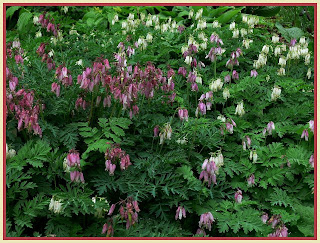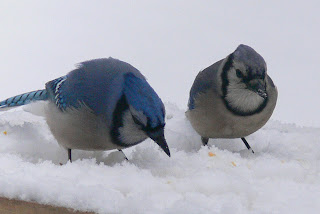
Saturday evening, January 22, 2011
The barometer is holding tight at 29.44 and the temperature continues at 5.5 degrees despite two different weather stations reminding us to dress warmly, bring in pets and watch out for seniors as below zero temps are on the way tonight. This is part of typical winter in Vermont and should not be a surprise. As I get older, I like it less, but I am never surprised.
I stopped by my friend Mike's today to snap some overdue pictures of his "green" chickens. Mike is my friend but he's also my egg man when the chickens are laying instead of "chivering" (port manteau word for chicken shivering). He fixes my broken machinery and provides an extra set of hands unannounced like when the potting mix truck arrives with 100 bales. He is a great mechanic and he can be a carpenter when times require.
Mike was worried about his chickens and the upcoming cold temps so he gathered up some recyclables and built a nice sun room for his chickens. Now they can come out, exercise, eat and be warm. There aren't any fancy chairs or other typical sun room furnishings but for the chickens, this is just right.
Mike added a new door to the former opening and then took an old window to serve as one wall of the new addition. Today when it was 17° and windy outside, it was 30° in the little addition. Even chickens can go green.
I stopped by my friend Mike's today to snap some overdue pictures of his "green" chickens. Mike is my friend but he's also my egg man when the chickens are laying instead of "chivering" (port manteau word for chicken shivering). He fixes my broken machinery and provides an extra set of hands unannounced like when the potting mix truck arrives with 100 bales. He is a great mechanic and he can be a carpenter when times require.
Mike was worried about his chickens and the upcoming cold temps so he gathered up some recyclables and built a nice sun room for his chickens. Now they can come out, exercise, eat and be warm. There aren't any fancy chairs or other typical sun room furnishings but for the chickens, this is just right.
Mike added a new door to the former opening and then took an old window to serve as one wall of the new addition. Today when it was 17° and windy outside, it was 30° in the little addition. Even chickens can go green.
 This isn't a fancy addition, it's a functional addition and the chickens love it. They can still come and go as they please but they are warmer as they walk around and enjoy the sun. I think they can see themselves in the window glass but I haven't asked.
This isn't a fancy addition, it's a functional addition and the chickens love it. They can still come and go as they please but they are warmer as they walk around and enjoy the sun. I think they can see themselves in the window glass but I haven't asked.
 Mike has a nice mix of chickens, each has a name perfectly matched to its personality, and most all lay tasty eggs which we enjoy. The big red rooster is a nasty bully but he thinks well of himself and that's what big roosters do. On the other end of the continuum are Becky (way up top in Mike's arms) and Bucky, down in front here, smallest of all with a nice red comb, black tail feathers and one heck of a voice. They are bantams and so far Becky hasn't parted with an egg. She loves the new greenhouse but she always lets Bucky go out and test the weather first.
Mike has a nice mix of chickens, each has a name perfectly matched to its personality, and most all lay tasty eggs which we enjoy. The big red rooster is a nasty bully but he thinks well of himself and that's what big roosters do. On the other end of the continuum are Becky (way up top in Mike's arms) and Bucky, down in front here, smallest of all with a nice red comb, black tail feathers and one heck of a voice. They are bantams and so far Becky hasn't parted with an egg. She loves the new greenhouse but she always lets Bucky go out and test the weather first.All the shavings, leaves and vegetable scrapes from the coop and the yard go into Mike's vegetable gardens and berry patches. Chickens are fun to raise and they are great benefit to one's land and family. If you have some room on your property, consider raising some yourself!
Writing from the mountain above Peacham Pond where the barometer is dropping but the temperature is not moving. Bet it will by morning. Be warm!
George Africa
The Vermont Gardener
Vermont Flower Farm
Social Networking Works©
On Facebook as Vermont Flower Farm and Gardens and also as George Africa
On Twitter as vtflowerfarm





























